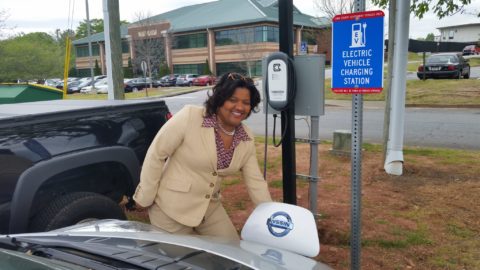
Electric vehicle (EV) sales are on the rise in both the U.S. and across the globe. Bloomberg New Energy Finance and Morgan Stanley both project that most cars sold in the U.S. will be EVs by 2040. And the world’s automakers are introducing new models every year. According to a study by the consulting firm AlixPartners, 207 new EV models will be available globally by 2022.
Electricity systems can accommodate this surge in EVs—and benefit all consumers—if state utility regulators adopt prudent policies. For example, two new studies highlight how everyone saves money when EVs charge at optimal times—such as when most major appliances are not being used and other demands on the grid are relatively low. The expected additional load from EV charging can be accommodated without substantial utility investment in electricity system upgrades—if effective charge-management strategies are in place.
Realizing these savings depends on smart policies, and it’s time for state decision-makers to act.
For example, a new Illinois Citizens Utility Board (CUB) report, Charging Ahead: Deriving Value from Electric Vehicles for All Utility Customers, finds that transportation electrification could save Illinois electricity consumers $2.6 billion through 2030. That’s an average of $116 per Illinois household. Most of this savings (up to $2 billion) comes from lower energy prices from managed charging.
CUB’s new report also finds that if policymakers fail to act, consumers will pay the price. Without managed charging, EVs can cause problems on the grid that increase costs. The report recommends that Illinois state policymakers act now to develop strategies to support EV growth and ensure that these vehicles create benefits to all electricity customers.
Synapse also recently published a report, Electric Vehicles Are Driving Electric Rates Down—the only retrospective analysis of the real-world savings from EVs. From 2012 through 2017, EVs in California increased utility revenues more than they increased utility costs, leading to downward pressure on electric rates for all consumers.
As the CUB report notes, the potential benefits of transportation electrification flow in many directions—to the EV owner/driver, the local economy, the environment, and to the electric system and all its users—if charging occurs when optimal for the grid. State policymakers need to act soon to take advantage of these benefits.
